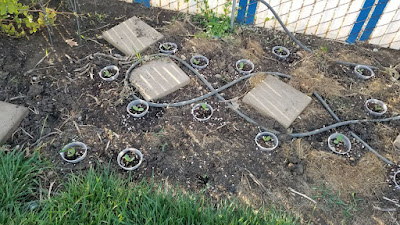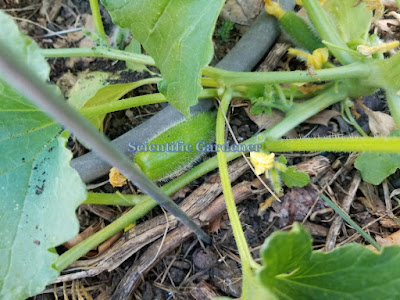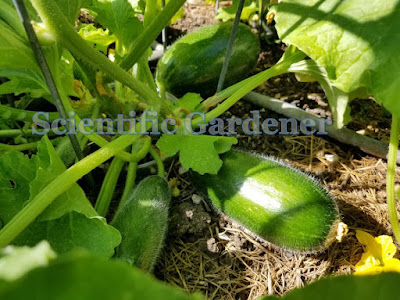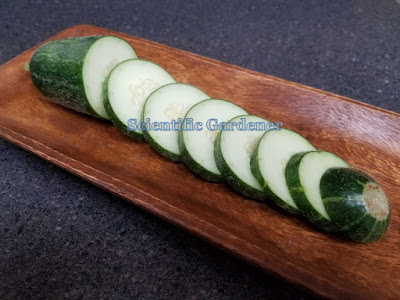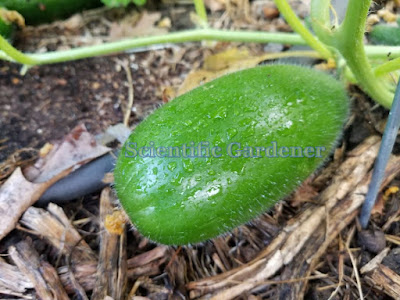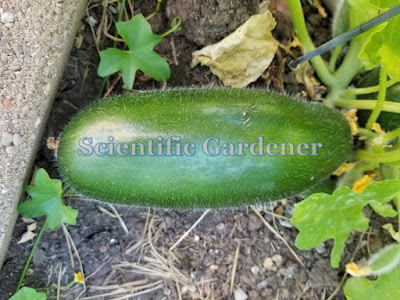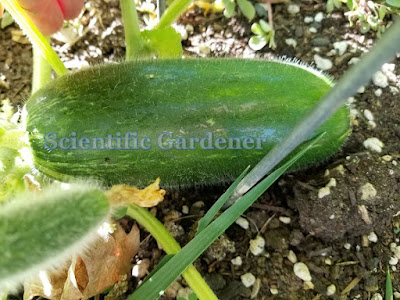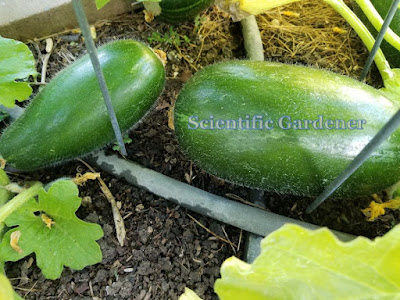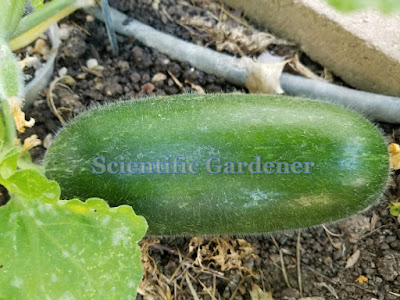As farmers and gardeners, we occasionally try to push the limits of what is possible. This is what occurred with me in the summer of 2022. I had already grown out one crop of carosello and was working on a second crop in the same area. Then, once all of the first crop had been cleared, I had room for one more crop of carosello. If it was a short-season variety, I could plant it in late July and have it produce before the end of the season, but it would inevitably be plagued with Powdery Mildew. But I had enough seed if things didn’t turn out well. Should I try it? Definitely!
If I were trying to grow these cold-sensitive immature melons in a cold situation, I would definitely feel greater trepidation over whether they would thrive and be able to make it before the end of the season. However, late July is the perfect time to start growing the last batch of short-season carosellos.
With memories of the rich flavor of these carosello from 2021 still in my memory (https://scientificgardener.blogspot.com/2023/01/carosello-spuredda-leccese-scuro.html) , I was eager to get these growing again.
Growing any melon variety this late in the season has its drawbacks. For example, growing in the same area as other plants that are experiencing Powdery Mildew greatly increases the probability and onset of the fungus on the new crop. But being able to come by every day to see the plants grow was so worth it. For those of you who have never enjoyed growing a short season variety, like the Scuro Leccese, you may be missing out. While they are definitely not as fast to mature as a radish, for fruiting plants, they can really grow at an accelerated rate. From being planted to producing fruit, the time lapse was right around 30 days. That was with 5-7 days since sprouting the seeds, so a total of 35-37 days from seed to fruit in the heat of the summer.
Unlike some other carosellos, the Scuro Leccese contains at least two layers of dark green. There is the surface dark color, then there is the secondary, deeper dark color. For me, the flavor is at its peak when the fruit is very dark, but the size is still below 2 inches (5cm) in diameter or width. Even though the fruit itself is primarily just dark, I love the patchy layers of dark green that are best perceived when looking at the fruit at just the right angle in direct sunlight. While you might not be able to see the patchy layers of color, here is a video of me looking at the Scuro Leccese.
For carosellos, the dark Scuro Leccese ranks high on water content and produces a high quality fruit early in the lifecycle of the plant. The fuzz is very light and hardly noticeable as the fruit grows larger. The healthy shine of the fruit conveys that this thin-skinned fruit possesses a crisp, yet tender juicy flesh.
For context, here is a video of me tasting this carosello variety.
While Powdery Mildew did end up setting in prior to the fruit sizing up, the disease pressure incurred from the fungus did put the plants into a state of stress which did allow for some premature seed production. This allowed me to save a meager crop of viable seed prior to their demise.
More than anything, I am very grateful for my friend who continues to allow me to use his yard to grow these varieties in each year. It makes a huge difference for me and I honestly would not be where I am without his help.



